How Crypto Infrastructure Works: From RPC Nodes to Indexers
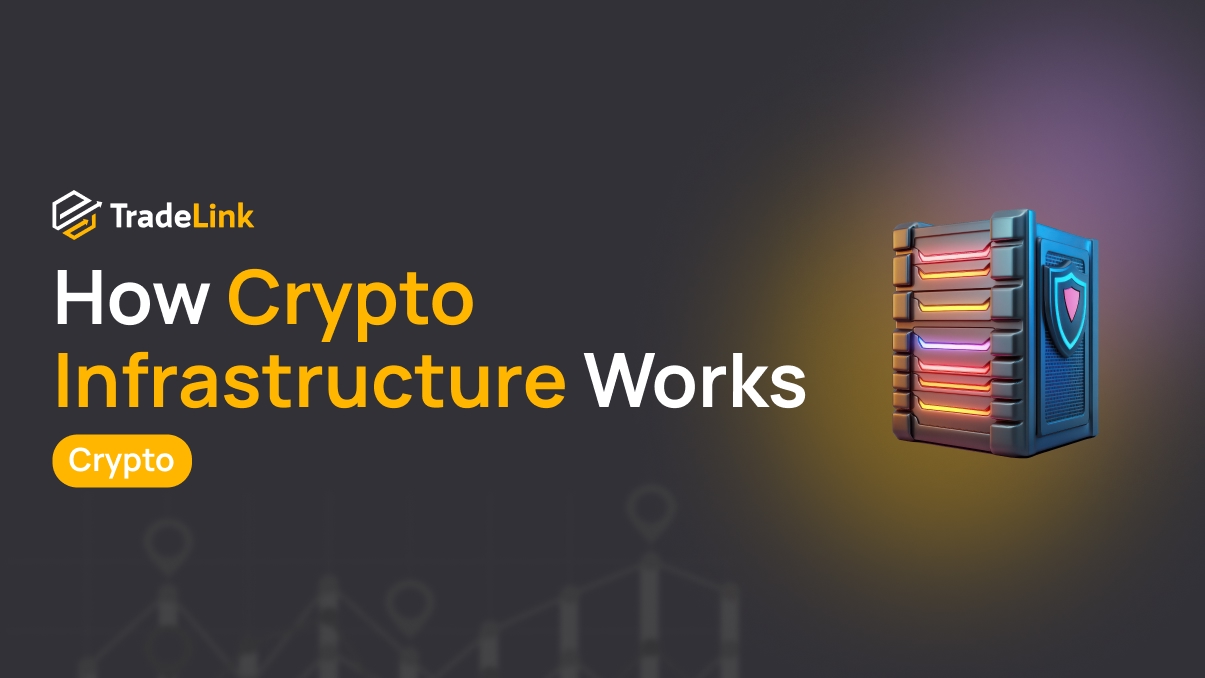
Contents
- Introduction
- What is Crypto Infrastructure
- The Role of Nodes in a Blockchain
- Why Indexers Are Needed in Crypto Networks
- Difference Between RPC Nodes and Indexers
- How Applications Use the Infrastructure Layer
- Popular Infrastructure Providers
- Issues and Future of Crypto Infrastructure
- Conclusion
Introduction
Every application in the crypto space requires a connection to the blockchain. The infrastructure layer enables this connection. Without it, wallets wouldn’t function, balances wouldn’t display, and transactions wouldn’t go through.
That’s why components such as RPC nodes, indexers, and other services form the foundation of the entire ecosystem. They help developers connect applications to networks, retrieve necessary data quickly, and build user-friendly interfaces. Without infrastructure, the blockchain remains, but interacting with it becomes nearly impossible.
What is Crypto Infrastructure
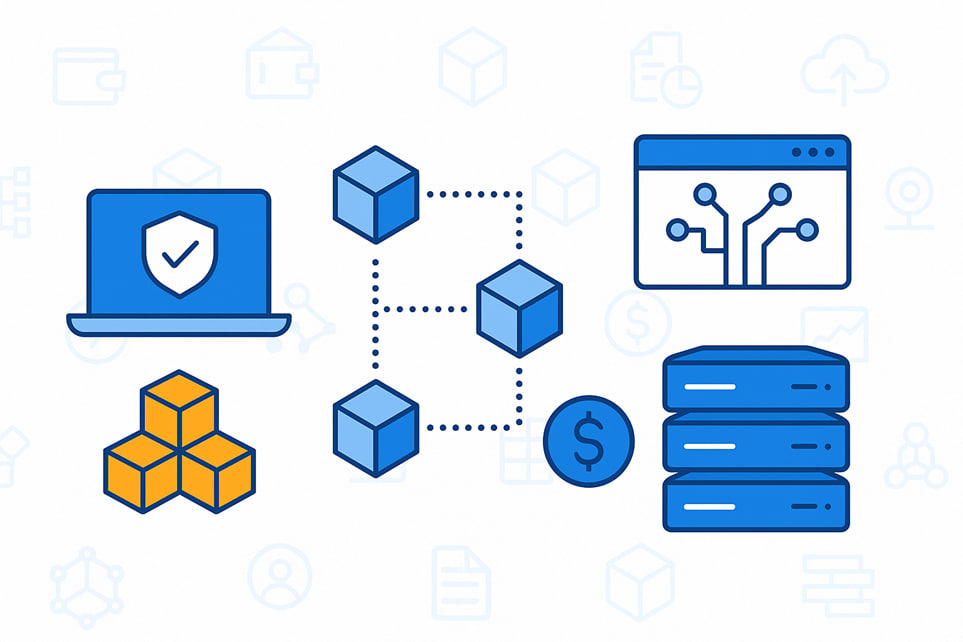
Crypto infrastructure is the foundation that powers all services and protocols on the blockchain. It’s not a single element, but a set of technical components:
- RPC nodes — allow applications to access the blockchain.
- Indexers — process and organise information.
- APIs — provide developers with quick access to required data.
This system acts as the backend of crypto applications, even if users only see a polished frontend. Infrastructure ensures data is accessible and user actions are executed correctly.
The Role of Nodes in a Blockchain
Every blockchain network operates through nodes — computers that store data and maintain network availability. They exchange information, verify transactions, and preserve the integrity of the chain. There are several types of nodes, each with a specific role:
- A full node stores all blocks and independently verifies every action on the network. This is the foundation of decentralisation.
- A light node does not store the entire chain. It queries other nodes for confirmation. These are commonly used in mobile wallets because they require less storage.
- An archival node goes beyond a full node — it stores all historical blockchain states. This is useful for analytics or complex queries.
- A validator node operates in Proof-of-Stake networks. It validates blocks, participates in consensus, and earns rewards. Validators maintain agreement across the network.
What are RPC Nodes and How Do They Work
When an application, exchange, or wallet wants to communicate with a blockchain, it doesn’t connect directly. It talks to an RPC node — a node that accepts external commands and returns the necessary data. For example: an address balance, block info, or transaction status. This communication method is called Remote Procedure Call (RPC).
The application sends a request, the node processes it, and returns a response. This works through the standard JSON-RPC protocol.
There are two ways to work with RPC nodes:
- Run your node — this gives you complete control, but it requires resources and expertise.
- Use a node provider — a service that maintains nodes and offers access via API. This is faster and simpler.
RPC has become the standard bridge between blockchains and external apps. No full-featured DeFi protocol can operate without it.
Why Indexers Are Needed in Crypto Networks
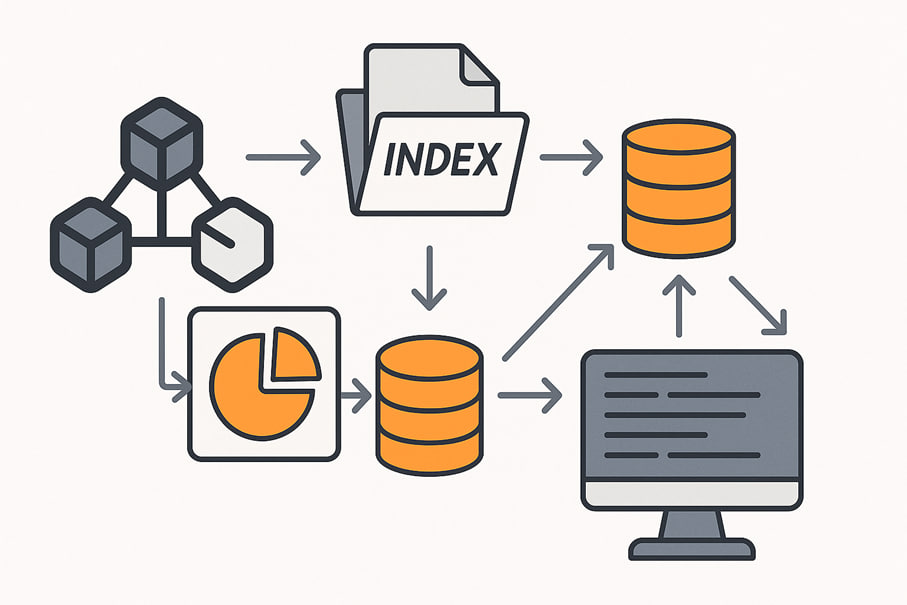
Blockchains store data as a chain of blocks. This is secure but inconvenient for search. If an app wants to know how many times a user has interacted with a contract or which tokens they hold, the node must scan the entire history of the contract. That’s slow and inefficient.
Indexers solve this problem. They serve as an intermediary layer between the blockchain and the interface. They collect on-chain data, sort and group it, and store it in a convenient format. This allows applications to retrieve required data through pre-defined paths instantly.
For example, when a user opens a wallet, the indexer already knows the user’s tokens, recent activity, and contract interactions — no extra queries needed. This makes interfaces fast and smooth.
Some indexers, such as GraphQL indexers, allow querying subgraphs — predefined data structures. This enables developers to request precisely what they need.
Difference Between RPC Nodes and Indexers
| Parameter | RPC Node | Indexer |
|---|---|---|
| Data Access Method | Raw data as stored on the blockchain | Pre-collected and structured data |
| Analogy | Library without a catalogue | Ready-made report on the topic |
| Response Speed | Slow: requires multiple queries | Fast: returns preprocessed result |
| Application Usability | Needs extra processing | Simplifies frontend: data is already organised |
| Purpose | Direct on-chain data access | Quick access to relevant data from a separate database |
| Interaction Type | Basic blockchain API via JSON-RPC | Advanced queries (e.g., GraphQL), filtering, sorting |
| Example Use Case | Check balance, send transaction | Retrieve address history, perform analytics |
How Applications Use the Infrastructure Layer
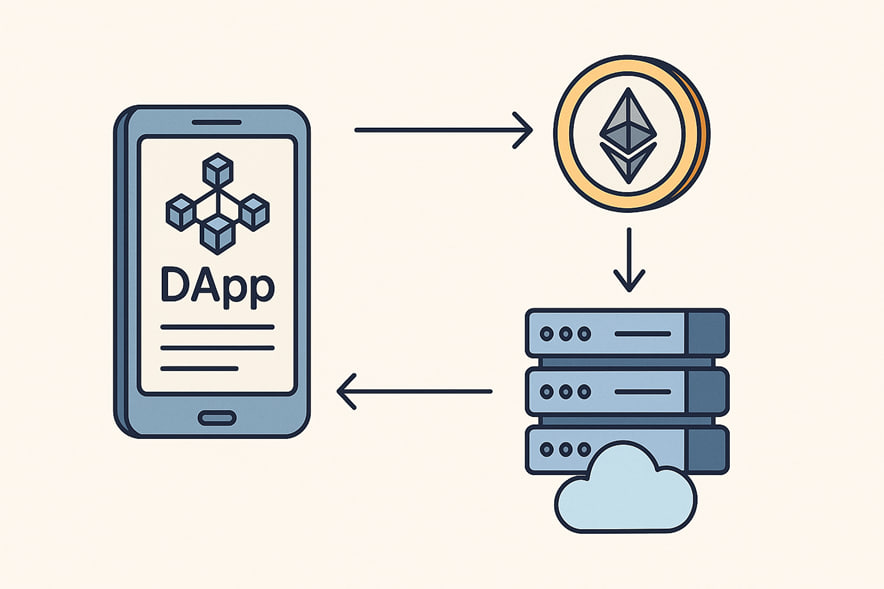
No blockchain application operates in isolation. It constantly queries the network for balances, transactions, and asset data — all through the infrastructure layer of cryptocurrency — a network of nodes, indexers, and APIs.
- A wallet displays user tokens because it fetches data from an indexer. It checks the assets held at the address and shows them in the interface. If it relied solely on RPC nodes, each query would take significantly longer.
- Decentralised exchanges (DEX) use RPC endpoints continuously. When a user wants to swap tokens, the app queries for rates and liquidity, and submits the transaction — all via RPC endpoints.
- NFT marketplaces like OpenSea utilise indexers to locate collections quickly. They store NFT structure, metadata, and trading history, enabling instant search without requiring a whole blockchain scan.
- DeFi protocols monitor staking, positions, and pool liquidity. They use nodes for transactions and indexers for dashboard data.
- Analytics platforms like Dune or Nansen also use indexers. They gather on-chain data, transform it into tables and charts. Without indexers, such tools would be painfully slow.
All these applications run smoothly because they have access to the proper infrastructure. Without it, interacting with a blockchain would be slow, complicated, and almost unusable for most users.
Popular Infrastructure Providers
Developers rarely run their nodes — this takes time and resources. Instead, they utilise ready-made services known as node providers. These platforms offer fast and reliable access to networks.
- Infura is one of the most well-known services. Projects like MetaMask and Uniswap use it. It provides access to Ethereum and other chains via a simple API.
- Alchemy offers more developer tools. It can track transaction history, monitor blockchain events, and help build dashboards.
- QuickNode supports many networks and offers fast node performance. Developers use it to reduce application response time.
- The Graph functions as an indexer. It collects and structures data. Developers define what to index and gain fast access via GraphQL. This is especially useful for analytics.
- Subsquid also focuses on indexing. It supports Substrate-based networks and other blockchains. It helps retrieve and store blockchain data in a convenient format.
These infrastructure providers play a key role in the ecosystem. Thanks to them, developers can focus on building products instead of maintaining network-level components.
Issues and Future of Crypto Infrastructure
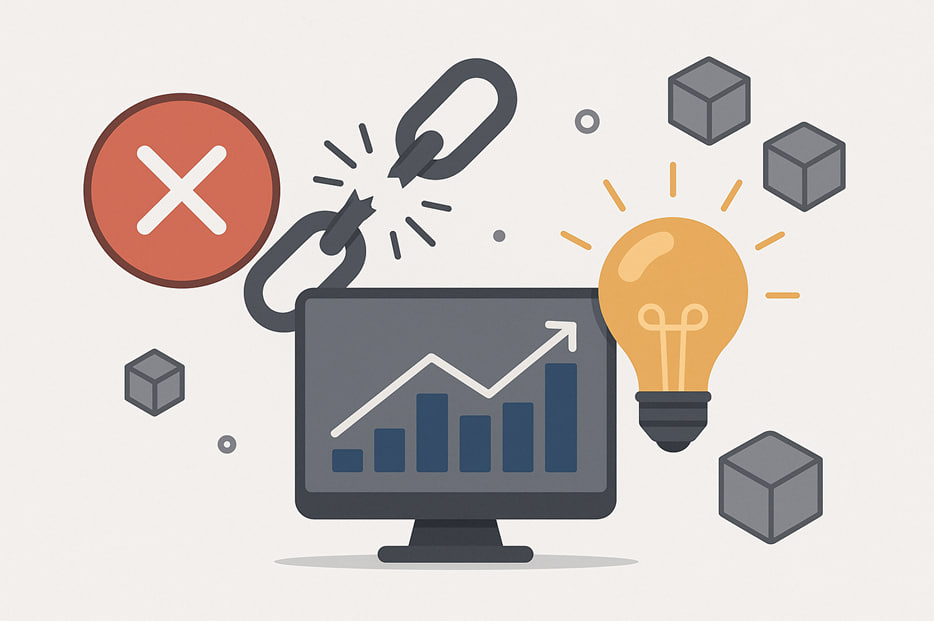
Challenges in Infrastructure
Crypto infrastructure seems reliable on the surface — but under the hood, some issues hinder growth and usability:
- The main issue is the centralisation of node access. Most projects rely on the same providers. If a node provider like Infura goes down, thousands of apps are affected. A supposedly decentralised ecosystem ends up depending on a central point.
- The second issue is resource demand. Running a full node requires storage, computation, and a significant amount of time. Not everyone can operate one independently, which limits transparency and accountability.
- Networks themselves can malfunction — delays, errors, or even bugs in the chain. If the infrastructure can’t handle the load, apps might not display data or send transactions on time.
- Indexers often lag behind the chain. If updates are fast but the indexer is slow, users see outdated information. This impacts DeFi protocols and the overall user experience.
Prospects for Infrastructure Development
Blockchain infrastructure is evolving. New ideas are emerging to improve it:
- Decentralised RPC networks are on the rise. Instead of routing queries through a single provider, requests are distributed across multiple nodes. This reduces single points of failure and boosts resilience.
- Indexers are getting faster and wiser. New solutions process real-time data and enable off-chain indexing with high speed.
- New data access standards are being developed. These provide universal interfaces, allowing apps to connect to any chain easily — thereby improving interoperability and speed.
- Finally, Infrastructure-as-a-Service (IaaS) is growing in Web3. Teams don’t need to build their infrastructure — they can use existing platforms. This helps launch products more quickly and affordably.
Conclusion
Infrastructure is the backbone of any blockchain project. Without it, wallets, exchanges, or DeFi protocols cannot operate. Everything starts with nodes, indexers, and data access systems. The better you understand the technical foundation, the easier it is to navigate the ecosystem.
If you’re a developer, choose reliable tools. If you’re a user, pay attention to the infrastructure powering your favourite services. Good infrastructure is what makes Web3 fast, stable, and usable.